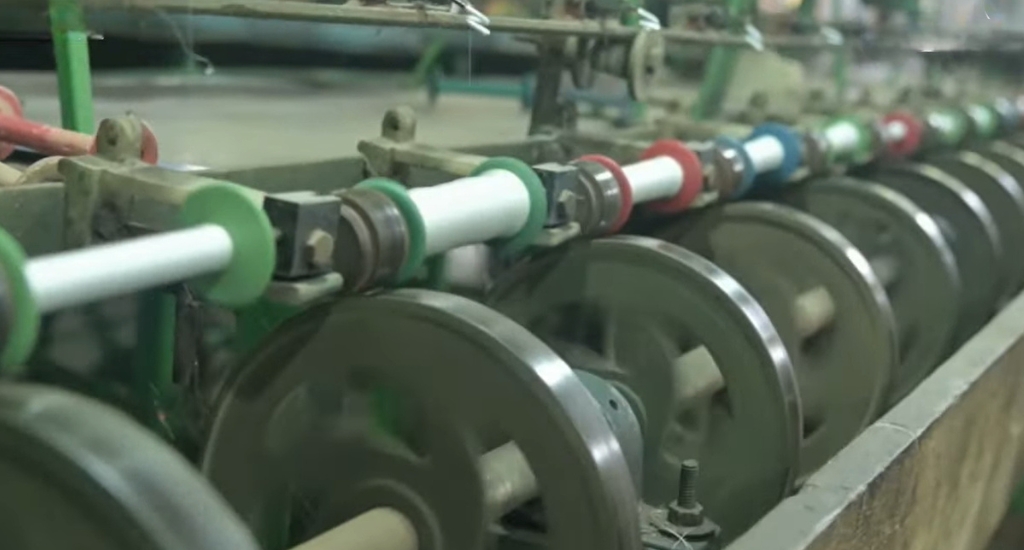
Bobbing along: How a simple machine can uplift artisans
The simple yet revolutionary hank to bobbin machine can transform the ancient art of weaving, enhancing incomes and preserving tradition while ushering artisans into a more prosperous future.

The simple yet revolutionary hank to bobbin machine can transform the ancient art of weaving, enhancing incomes and preserving tradition while ushering artisans into a more prosperous future.
The way local weavers work in small villages across India may soon change. Instead of the familiar sound of hand-powered spinning wheels, their homes may ring with a new sound – that of a revolutionary machine that will transform the age-old craft of bobbin winding.
The machine not only promises efficiency but also lends hope for a better livelihood. The hank to bobbin winding machine, a simple and affordable solution to empower weavers, promises to be a game-changer.
Weaving has long been a traditional household practice and occupation among many Indian communities, with generations of artisans dedicating their lives to perfecting the craft. Yet, behind the beauty of a finely woven fabric lies a labour-intensive process — one that begins with the winding of yarn from a hank to a bobbin.

A hank is a coiled or looped bundle of yarn, while a bobbin is a small spool used to hold yarn or thread for weaving or sewing.
Traditionally, this crucial step is done manually using a charkha (spinning wheel), but the process is slow, yielding a mere 500 grams of yarn per day. It is also tedious work causing physical strain.
But what if this painstaking task could be transformed into one that not only boosts efficiency but also increases income? That’s where the hank to bobbin, developed by IIT-Guwahati under the RuTAG Crossfyre platform, comes into the picture.
Also Read: Weaving a tapestry on traditional looms
Designed with innovation and accessibility in mind, this machine offers a multi-spindle operation — either 6 or 12 spindles at a time, allowing weavers to handle up to 12 hanks simultaneously. By switching from manual to electrical operation, the machine increases the daily output to an impressive 8-10 kg, effectively doubling the income of traditional weavers.
Weaving is more than just a source of income for many Indian communities. It is a way of life. However, the traditional bobbin winding method limits how much a weaver can produce in a day, directly impacting their earnings.

The introduction of the hank to bobbin winding machine addresses this issue head-on.
The new design is also versatile, able to handle a variety of yarn materials such as cotton, eri and muga. The cost per unit comes to Rs 65,000 — an investment that pays for itself through increased productivity.
Besides efficiency, the technology helps achieve the Sustainable Development Goals (SDGs) by promoting productive work and economic growth. For weavers in rural areas, being able to double their production means they can elevate themselves financially while preserving their traditional crafts.
The machine can also open doors for skill development and vocational training opportunities for the unskilled. Moreover, with more weavers able to produce higher quantities of yarn at a faster rate, there is a ripple effect across the textile sector.
Also Read: Tangkhul Nagas stare at threadbare future of backstrap weaving

While boosting the overall economy of these weaving communities, it also ensures that their skills remain relevant in an increasingly industrialised world.
While similar machines exist in the market, the hank to bobbin winding machine stands out in several ways. Traditional machines are often bulky and made from heavy cast iron, making transportation to rural or hilly areas challenging. They also come with a high price tag, placing them out of reach for many small-scale weavers.
In contrast, the hank to bobbin winding machine is compact, easy to transport and affordable. It’s designed for the specific needs of rural artisans. With its electric motor (0.5 to 1 hp), it offers a reliable and steady winding process that minimises the risk of yarn breakage.

Thanks to this technology, weavers can look forward to increased production and income, getting the opportunity to invest in their families, improve their living conditions, and even pass on their craft to the next generation with greater pride and financial security.
Also Read: Reviving Pattu-weaving in Barmer thread by thread
The Rutag Smart Village Centre (RSVC) Program, initiated under the Office of the Principal Scientific Adviser (PSA), GoI, aims to drive scientific and technological interventions in rural development. It focuses on enhancing livelihoods, sustainable agriculture, and innovation-driven solutions for rural communities.
The lead image on top shows the hank to bobbin winding machine developed by IIT-Guwahati. (Screengrab from a YouTube video of Office of the Principal Scientific Adviser to the Govt. of India)